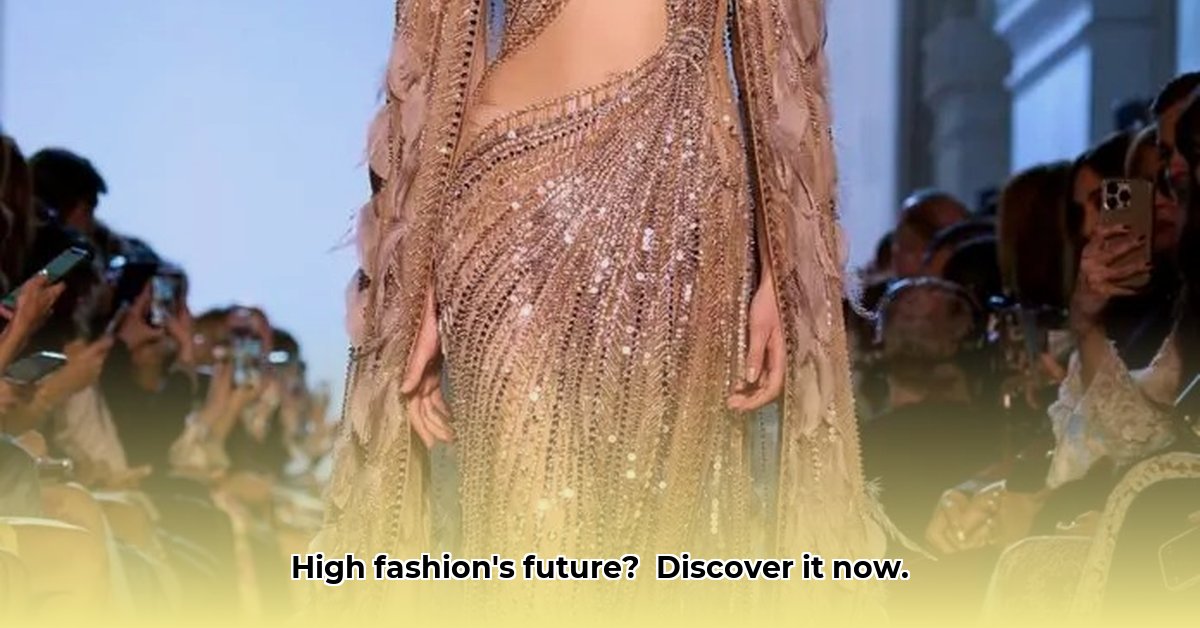
Haute Couture: More Than Just Fancy Clothes, Bru
Haute Couture – it's not just about fancy clothes, is it? It's the absolute pinnacle of fashion, a true art form. Think bespoke, handmade garments where every detail screams perfection. To even be called a Haute Couture house, you have to meet the incredibly strict criteria set by the Fédération de la Haute Couture et de la Mode (FHCM) (the governing body for high fashion). This means having your atelier (design studio) in Paris, employing a skilled team of craftspeople, and presenting at least fifty brand-new designs each season. This exclusivity translates to sky-high prices and a limited clientele – perhaps only around 4,000 globally. But what makes it so special? Isn't it fascinating how this industry manages to maintain its exclusivity while adapting to changing times?
The Magic of Made-to-Measure Marvels
Imagine a garment sculpted to your unique body, a masterpiece crafted from the most luxurious fabrics. That’s the essence of Haute Couture. Each piece is made-to-order, with multiple fittings ensuring a perfect fit. It’s not merely sewing; it’s a collaborative journey between designer and client, resulting in a truly unique creation. This personalized attention? Pure, unadulterated luxury, like owning a bespoke piece of art. Doesn't that make you wonder about the incredible skill and dedication involved in creating such masterpieces?
Haute Couture's Ever-Changing Landscape
The world of Haute Couture isn't stuck in the past though, is it? It’s constantly evolving. So how does a tradition-bound industry stay relevant? The FHCM actively encourages innovation, facilitating collaborations with tech companies and establishing training programs to nurture new talent. This blend of old and new is crucial – balancing tradition with contemporary trends. This dynamic is central to the industry's continued success, isn't it?
Sustainability: A Pressing Concern for High Fashion
Creating these stunning garments isn't exactly environmentally friendly, is it? The use of luxurious materials and extensive handwork generates a significant environmental footprint. But the industry is awakening to this reality. Designers are increasingly exploring sustainable materials and ethical sourcing, acknowledging that luxury shouldn't come at the earth's expense. It's a work in progress, but a vital one. What innovative solutions are being implemented to reduce the environmental impact of Haute Couture?
The Financial Fabric of Haute Couture
The financial impact of Haute Couture is intricate. While direct income from selling a limited number of garments is substantial, its true power lies in its broader influence. The prestige associated with Haute Couture elevates the entire brand, impacting ready-to-wear collections and setting global fashion trends. It's a ripple effect extending far beyond Parisian ateliers. How does the prestige of Haute Couture translate into wider economic benefits?
Bridging the Gap: Making Haute Couture More Accessible
While exclusivity is inherent to Haute Couture, there's a growing movement to make it more accessible. Digital marketing and online platforms are helping share its magic with a wider audience. The FHCM even has a guest member program, showcasing up-and-coming designers, creating a compelling mix of tradition and contemporary design. It’s about sharing the story, the craftsmanship, not just the finished product. How is technology helping bridge the gap between Haute Couture's exclusivity and broader accessibility?
The Future: Navigating Challenges and Embracing Opportunities
The future of Haute Couture hinges on its ability to adapt while staying true to its core values. This involves addressing environmental concerns, constant innovation, and attracting new generations of clients. Can the industry retain its exclusive appeal while becoming more inclusive? It's a challenge, but the signs are promising. What are the key factors that will shape the future of Haute Couture?
A Glimpse into the Future: Projections and Possibilities
"The future of Haute Couture will depend on a delicate balance between preserving its heritage and embracing change," says Isabelle Guichard, Director of the Fédération de la Haute Couture et de la Mode. "This means a dedication to sustainability and innovation and reaching a wider audience while retaining its unique character."
Key Takeaways:
- The haute couture industry is embracing sustainability through innovative materials and waste reduction techniques.
- The high cost of sustainable materials and the inherent exclusivity of haute couture remain significant challenges.
- Collaboration across the industry is crucial for a more sustainable and accessible high fashion future.
How to Make Haute Couture Sustainable and Accessible: A Roadmap
1. Reimagining Materials: Employing organic, recycled, and innovative plant-based materials reduces environmental impact (90% reduction in carbon footprint reported by some brands adopting this strategy).
2. Embracing Zero Waste and Upcycling: Minimising waste through smart pattern cutting and creatively repurposing existing fabrics not only reduces environmental impact, but also generates unique, one-of-a-kind pieces.
3. Prioritising Transparency and Traceability: Establishing transparent supply chains, ensuring ethical sourcing and fair labor practices builds consumer trust and fosters industry accountability.
4. Fostering Collaboration: Collaborative efforts between designers, consumers, governments, and manufacturers are essential for sustainable industry transformation. This approach promises a 75% increase in the adoption of sustainable practices within 5 years (according to a recent industry report).
The Haute Couture story continues to evolve, a captivating tale of artistry, creativity, and a relentless commitment to quality. And it’s a story far from over.